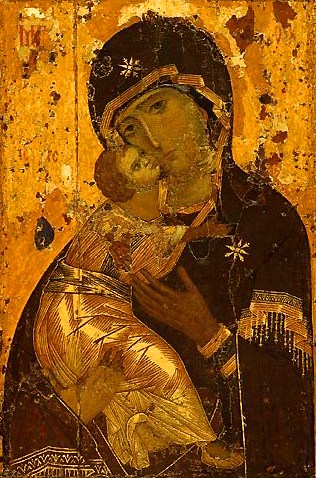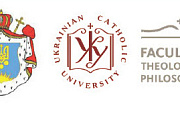May, Moleben, and the Mother of God

Mary the Mother of God, our spiritual Mother and Mother of the Church, brings a certain tenderness, compassion, and loving concern which has touched the hearts, souls, and minds of every generation throughout the history of the Church. Her title of “Mother” reveals her unique relationship with her Son and with the Church. In this, she is a wonderful source of inspiration, hope, and courage as we face the many trials and challenges of our Church and society.
Although we honour Mary at all times and in all our prayers and church services, May has been chosen as a time to focus on the Mother of God and her place in our salvation. Mary is the greatest of all the saints. Every Divine Liturgy is offered first “for our most holy, most pure, most blessed and glorious Lady, the Mother of God and ever-virgin Mary.” She was chosen and saved from the beginning of her life because of the unique role she was to play in salvation history. When Mary said yes to bearing the Son of God, she became the first to be saved. Many events of her life provide us with a model of how we should live. We celebrate and venerate the Mother of God because she was the Theotokos (God-bearer).
Devotional services have been the Church’s response to help us express certain aspects of our relationships with God, Mary or certain saints. First among these services are those that honour the Mother of God. We do not adore her or worship her as we do God, but we venerate her; that is, we show her reverence and honour.
One of the devotional services is the Moleben. In general, a moleben is a service of intercession or supplication. The Moleben to the Theotokos is based on the service of matins, as served on a feast day, complete with a Gospel reading — in this case, Luke’s account of Mary visiting Elizabeth. It also includes the trisagion hymn in honour of the Blessed Trinity, the Our Father, petitions from the faithful and, of course, hymns of praise. This particular moleben is said to have originated at the beginning of the 20th century in Western Ukraine. Since then it has become beloved by Ukrainian Catholics, who hold a special devotion to the Theotokos. It is commonly used every Wednesday throughout the month of May.
Mary the Mother of God, our spiritual Mother and Mother of the Church, brings a certain tenderness, compassion, and loving concern which has touched the hearts, souls, and minds of every generation throughout the history of the Church. Her title of “Mother” reveals her unique relationship with her Son and with the Church. In this, she is a wonderful source of inspiration, hope, and courage as we face the many trials and challenges of our Church and society.
Although we honour Mary at all times and in all our prayers and church services, May has been chosen as a time to focus on the Mother of God and her place in our salvation. Mary is the greatest of all the saints. Every Divine Liturgy is offered first “for our most holy, most pure, most blessed and glorious Lady, the Mother of God and ever-virgin Mary.” She was chosen and saved from the beginning of her life because of the unique role she was to play in salvation history. When Mary said yes to bearing the Son of God, she became the first to be saved. Many events of her life provide us with a model of how we should live. We celebrate and venerate the Mother of God because she was the Theotokos (God-bearer).
Devotional services have been the Church’s response to help us express certain aspects of our relationships with God, Mary or certain saints. First among these services are those that honour the Mother of God. We do not adore her or worship her as we do God, but we venerate her; that is, we show her reverence and honour.
One of the devotional services is the Moleben. In general, a moleben is a service of intercession or supplication. The Moleben to the Theotokos is based on the service of matins, as served on a feast day, complete with a Gospel reading — in this case, Luke’s account of Mary visiting Elizabeth. It also includes the trisagion hymn in honour of the Blessed Trinity, the Our Father, petitions from the faithful and, of course, hymns of praise. This particular moleben is said to have originated at the beginning of the 20th century in Western Ukraine. Since then it has become beloved by Ukrainian Catholics, who hold a special devotion to the Theotokos. It is commonly used every Wednesday throughout the month of May.
Source: https://sspp.ca
Video from St. Joseph's Ukrainian Catholic Church Winnipeg
Use this link to download text of Moleben







